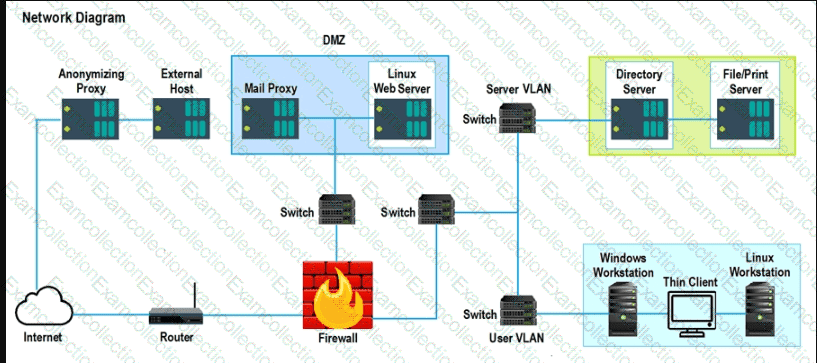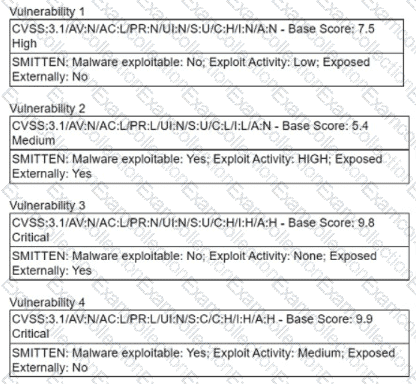CompTIA CS0-003 - CompTIA CyberSecurity Analyst CySA+ Certification Exam
An analyst discovers unusual outbound connections to an IP that was previously blocked at the web proxy and firewall. Upon further investigation, it appears that the proxy and firewall rules that were in place were removed by a service account that is not recognized. Which of the following parts of the Cyber Kill Chain does this describe?
Which of the following describes how a CSIRT lead determines who should be communicated with and when during a security incident?
The Chief Information Security Officer (CISO) of a large management firm has selected a cybersecurity framework that will help the organization demonstrate its investment in tools and systems to protect its data. Which of the following did the CISO most likely select?
A cybersecurity analyst has recovered a recently compromised server to its previous state. Which of the following should the analyst perform next?
Which of the following will most likely ensure that mission-critical services are available in the event of an incident?
A security analyst is assisting a software engineer with the development of a custom log collection and alerting tool (SIEM) for a proprietary system. The analyst is concerned that the tool will not detect known attacks and behavioral IoCs. Which of the following should be configured in order to resolve this issue?
An organization's email account was compromised by a bad actor. Given the following Information:
Which of the following is the length of time the team took to detect the threat?
An end-of-life date was announced for a widely used OS. A business-critical function is performed by some machinery that is controlled by a PC, which is utilizing the OS that is approaching the end-of- life date. Which of the following best describes a security analyst's concern?
A security analyst performs various types of vulnerability scans. Review the vulnerability scan results to determine the type of scan that was executed and if a false positive occurred for each device.
Instructions:
Select the Results Generated drop-down option to determine if the results were generated from a credentialed scan, non-credentialed scan, or a compliance scan.
For ONLY the credentialed and non-credentialed scans, evaluate the results for false positives and check the findings that display false positives. NOTE: If you would like to uncheck an option that is currently selected, click on the option a second time.
Lastly, based on the vulnerability scan results, identify the type of Server by dragging the Server to the results.
The Linux Web Server, File-Print Server and Directory Server are draggable.
If at any time you would like to bring back the initial state of the simulation, please select the Reset All button. When you have completed the simulation, please select the Done button to submit. Once the simulation is submitted, please select the Next button to continue.


A security manager is looking at a third-party vulnerability metric (SMITTEN) to improve upon the company's current method that relies on CVSSv3. Given the following:

Which of the following vulnerabilities should be prioritized?




